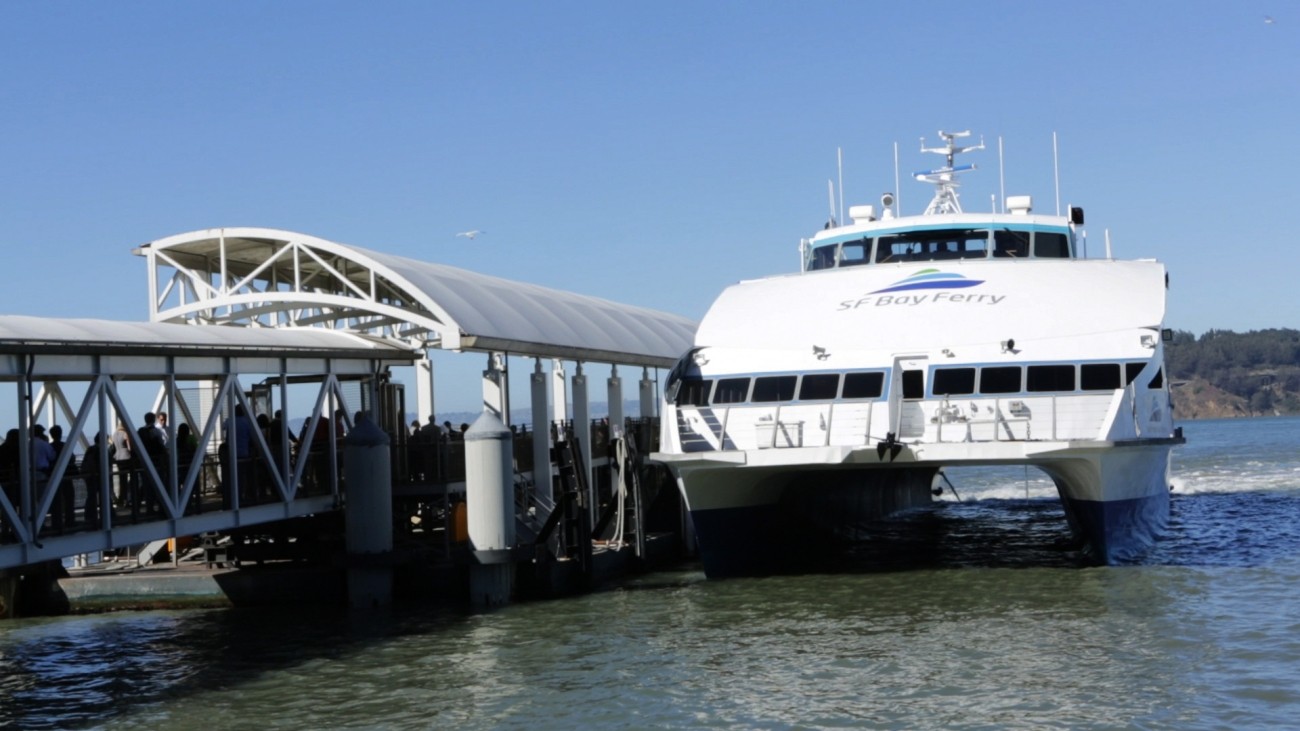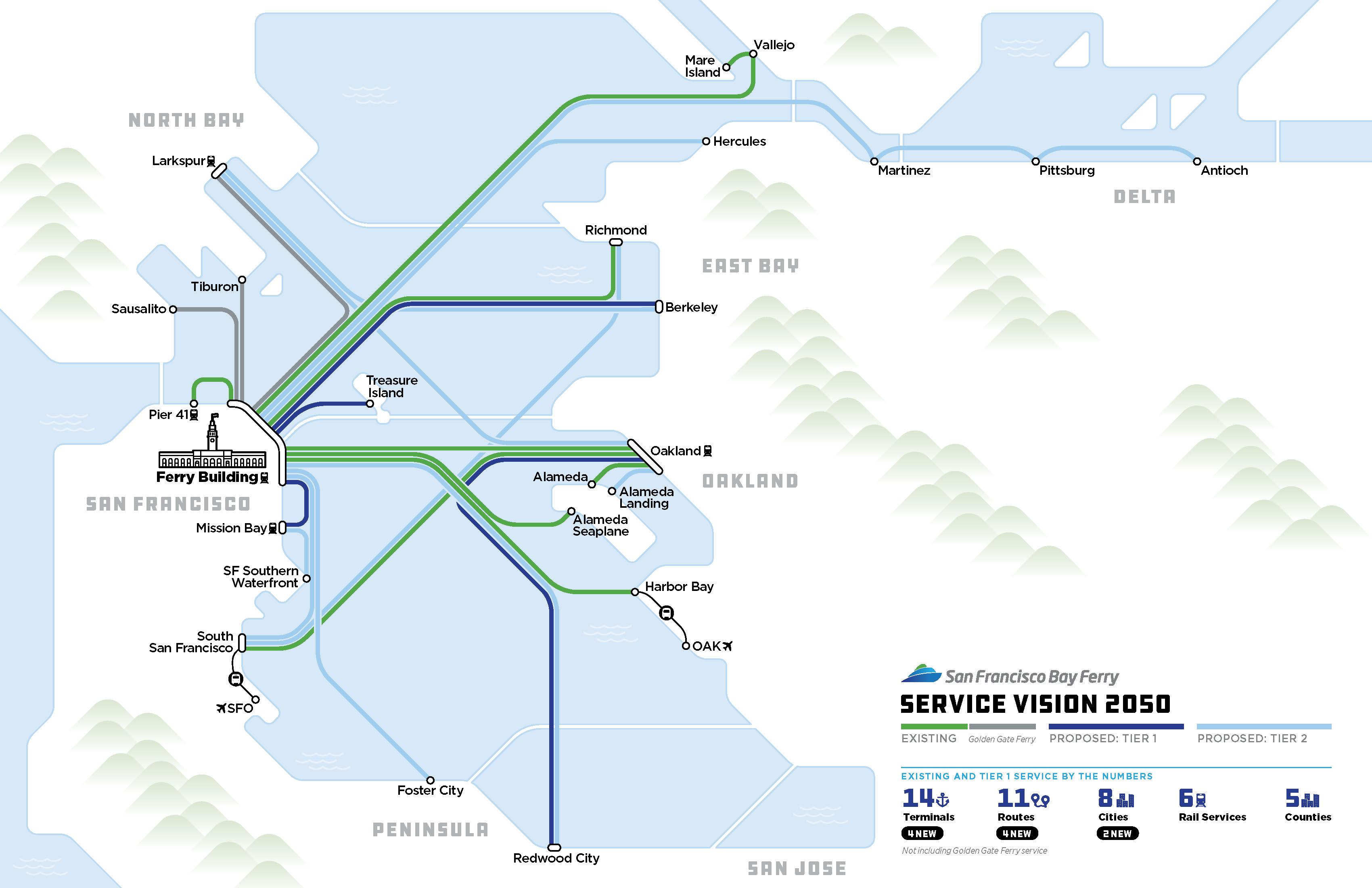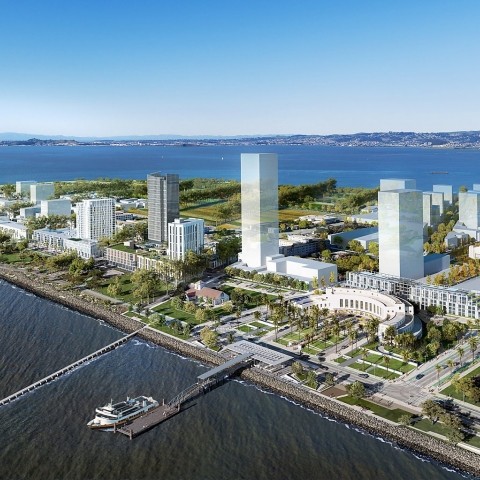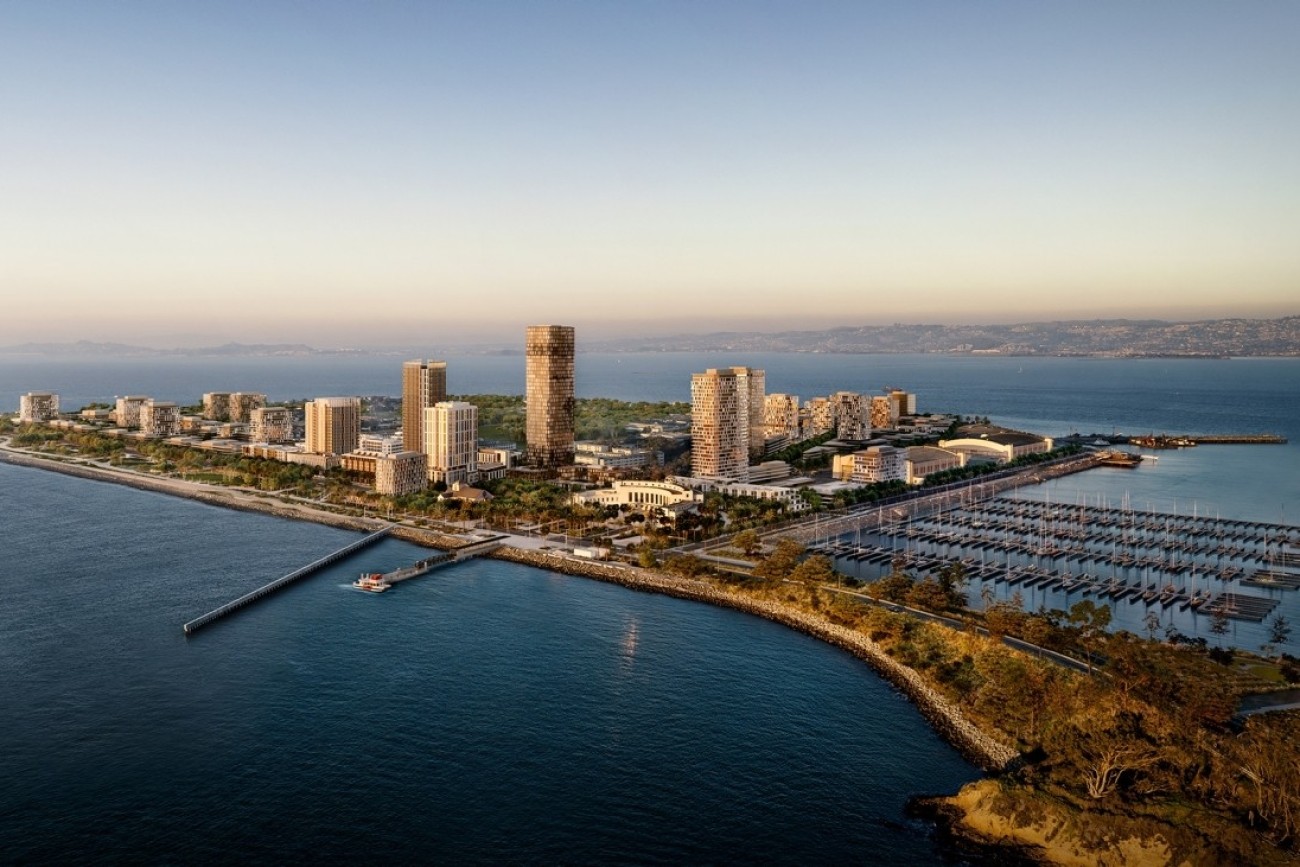
Photo by SF Bay Ferry’s Media Center
In May, the Transportation Authority Board approved up to $1.68 million in State Transit Assistance County Block Grant funds as ‘seed funding’ toward the first year of operations for the San Francisco Bay Ferry’s Treasure Island Electric Ferry Service between Treasure Island and the Ferry Building. The Water Emergency Transportation Authority (WETA) provides San Francisco Bay Ferry Service.
Treasure Island’s fully electric ferry service will reduce emissions, enhance mobility and connect visitors to open spaces, restaurants, and other amenities on the Island.
The Treasure Island service is part of WETA’s 2050 Service Vision and Expansion Policy, adopted by the WETA Board in May. The 2050 Service Vision, defines a long-term service plan for the agency, including system electrification, new vessels, routes, increased trips on its six existing routes, and new ferry terminals.
The first electric vessel is expected to serve Treasure Island by 2026 to meet California Air Resources Board zero emission requirements followed by expansion to new ferry terminals in Mission Bay (San Francisco), Berkeley and Redwood City.
The second phase of expansion would include ferry service extending from Carquinez Strait communities such as Martinez, Pittsburg, and Antioch to Foster City and including direct East Bay-Marin County service as well as additional routes serving South San Francisco.

Learn more about the Bay Ferry 2050 Service Vision Plan.

